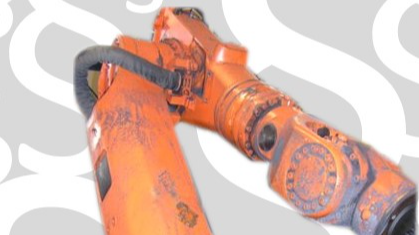Industrial robots are often given a second life. Due to changed production requirements, industrial robot systems are often converted or dismantled just a few years after initial commissioning. The existing robots are usually not scrapped. Because of its high value and high flexibility (program, space, tools), it usually expects to be reused in another or even new system. At the same time, the Circular Economy Act obliges the sustainable use of resources.

This raises the question: Can used industrial robots meet the requirements that will apply when they are reused?
Table: Placing on the market of used industrial robots and their parts (practical examples, simplified)
| Case study | Safety-relevant requirements for | Legal basis | ||
| Distributor of the used object | Responsible re-applier of reused object | New CE-Mark | ||
| A) Used robot is disassembled, individual parts are put back on the market as spare parts | Provision of safety-relevant information where necessary* | Safety-relevant documentation of the replacement. Depending on the type and scope of the exchange, risk assessment, visual inspection and functional test | No | Product Safety Act (ProdSG), Industrial Safety Ordinance (BetrSichV), TRBS 1201 |
| B) Used robot is installed in an existing system, e.g. as an replacement of an identical defective robot | Provision of the information necessary for safe reuse, e.g. original documents | Safety-relevant documentation of the replacement, Risk assessment, visual inspection and functional test | No | |
| C) Used robot is installed in a new system | Provision of the information necessary for safe reuse, e.g. original documents | Carry out EC conformity assessment, prepare documents, e.g. EC declaration of conformity CE mark Type plate Technical documentation with risk assessment | Yes, for the new system | EC Machinery Directive, EN ISO 10218 Part 1 and Part 2 |
*For many individual components, original documents are still publicly accessible several years after initial installation, e.g. download original documents from the manufacturer of control components
Case C in particular, which is mentioned in Table C, poses challenges for system manufacturers. This is because the current regulations and standards apply to new systems. This also applies if used components have been installed within the system. The EC directives and EU regulations are binding. However, with regard to compliance with the standards, the system manufacturer has a certain degree of freedom. The EN ISO 10218-1 and EN ISO 10218-2 standards applicable to industrial robots have a high status due to their listing in the Official Journal of the EU. However, the system manufacturer may deviate from this on the basis of his risk assessment. As explained in the VMBG-Mitteilungen issue 4-2009, it is possible, for example, to install a used industrial robot with redundant safety control in a new system. Even if the currently required calculation of the PL is no longer possible due to a lack of data. In this way, other aspects of a new standard can also be excluded. It is important that the deviations are justified by risk assessment and the machine is still safe. Furthermore, the deviations must be transparently documented to the responsible installer. In any case the requirements of the EC Machinery Directive shall be fulfilled.
When it comes to cybersecurity, it’s not as simple as eliminating these requirements through risk assessment and documentation. This is because protective measures against cyber threats are not only required in the new EN ISO 10218-1:2025 standard. The new machinery regulation EU 1230 and the so-called Cyber Resilience Act (CRA) also require appropriate protective measures.
Note: This article is a translation of German websites

